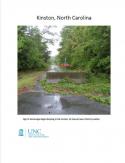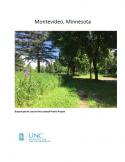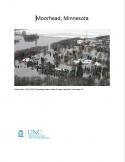
Research Reports
ELI publishes Research Reports available for free download that present the analysis and conclusions of the policy studies ELI undertakes to improve environmental law and policy. These reports contribute to education of the profession and disseminate diverse points of view and opinions to stimulate a robust and creative exchange of ideas. Those publications, which express opinions of the authors and not necessarily those of the Institute, its Board of Directors, or funding organizations, exemplify ELI’s commitment to dialogue with all sectors.
In this case study, the University of North Carolina Institute for the Environment and the Environmental Law Institute examine floodplain buyouts in Jefferson County, Wisconsin that were funded by the Hazard Mitigation Grant Program.
Back to list of floodplain buyout case studies
Read More >
In this case study, the University of North Carolina Institute for the Environment and the Environmental Law Institute examine floodplain buyouts in Kenosha County, Wisconsin that were funded by the Hazard Mitigation Grant Program.
Back to list of floodplain buyout case studies
Read More >
In this case study, the University of North Carolina Institute for the Environment and the Environmental Law Institute examine floodplain buyouts in Kinston, North Carolina that were funded by the Hazard Mitigation Grant Program.
Back to list of floodplain buyout case studies
Read More >
In this case study, the University of North Carolina Institute for the Environment and the Environmental Law Institute examine floodplain buyouts in Montevideo, Minnesota that were funded by the Hazard Mitigation Grant Program.
Back to list of floodplain buyout case studies
Read More >
In this case study, the University of North Carolina Institute for the Environment and the Environmental Law Institute examine Moorhead, Minnesota's floodplain buyouts that were funded through the Hazard Mitigation Grant Program.
Back to list of floodplain buyout case studies
Read More >